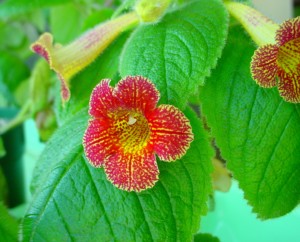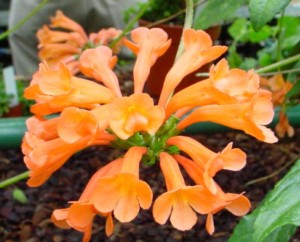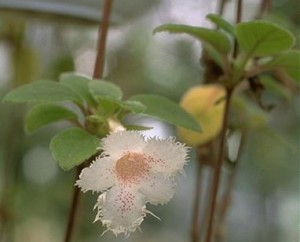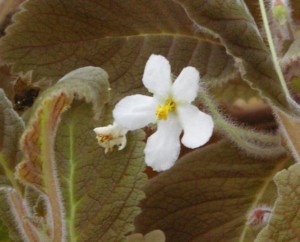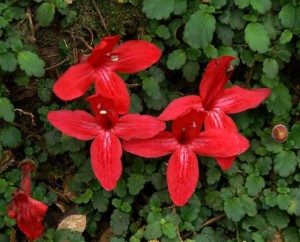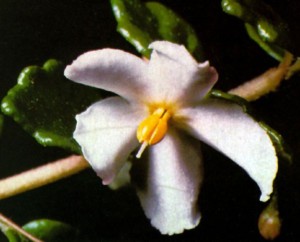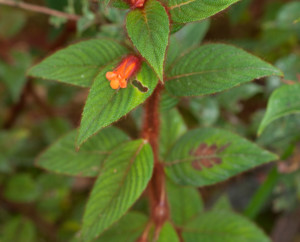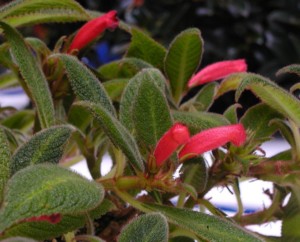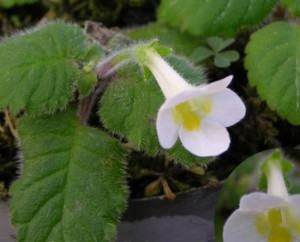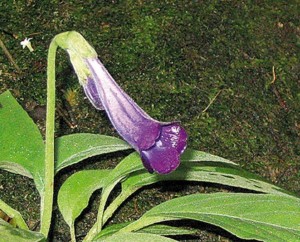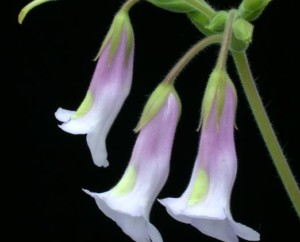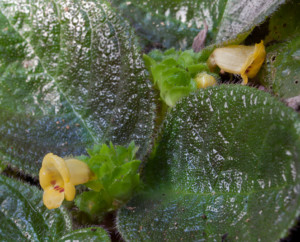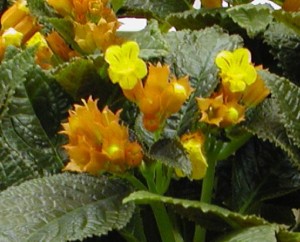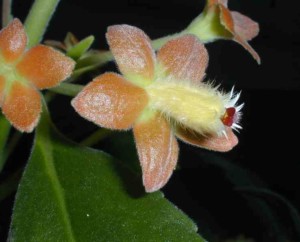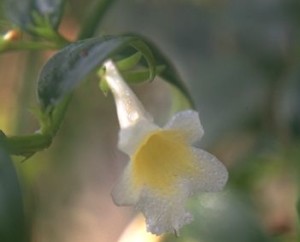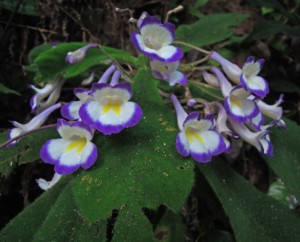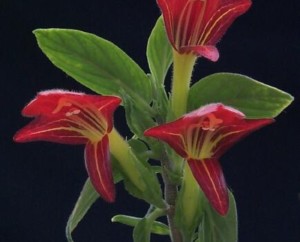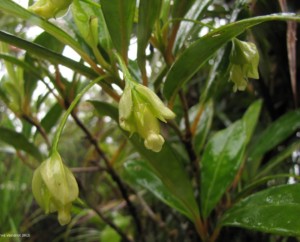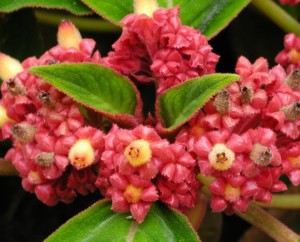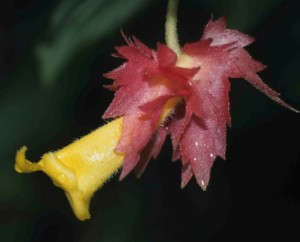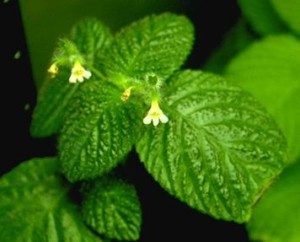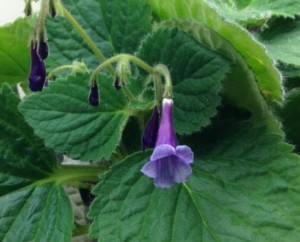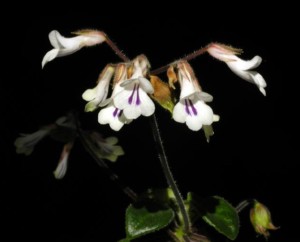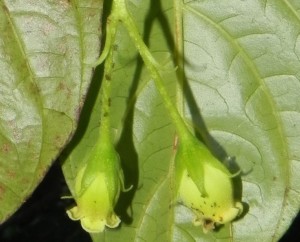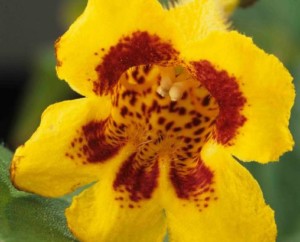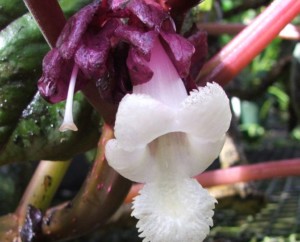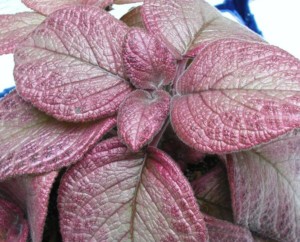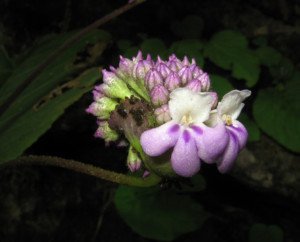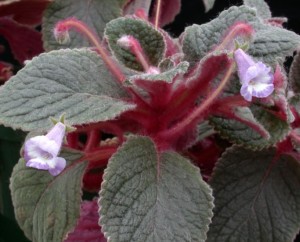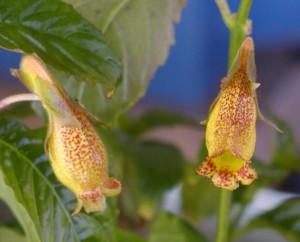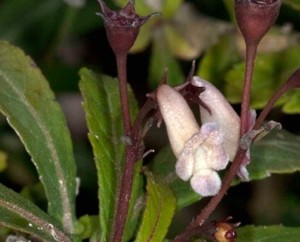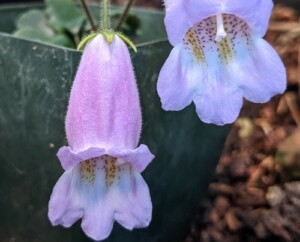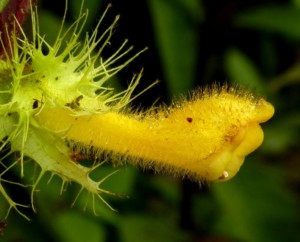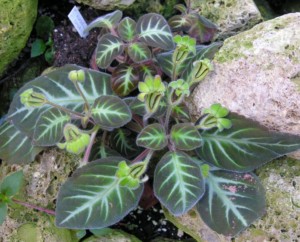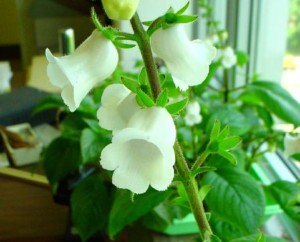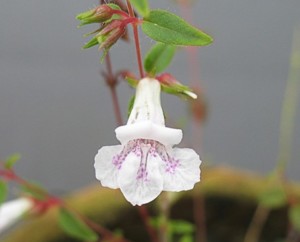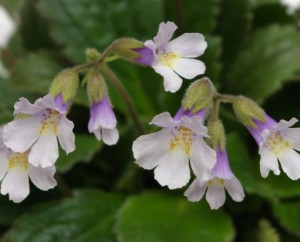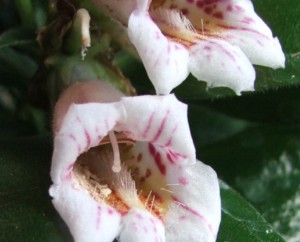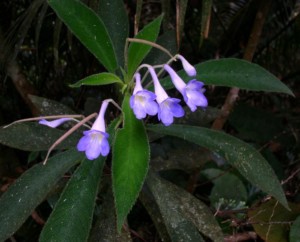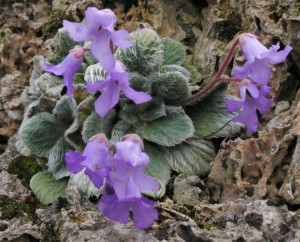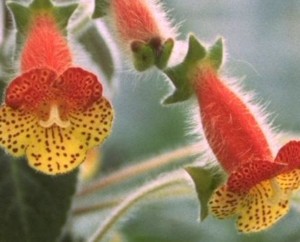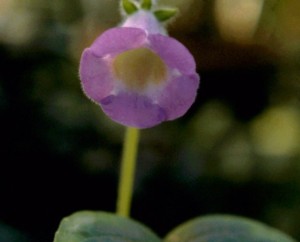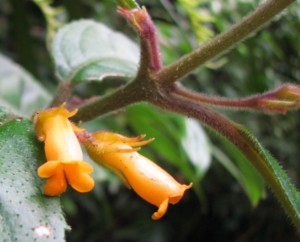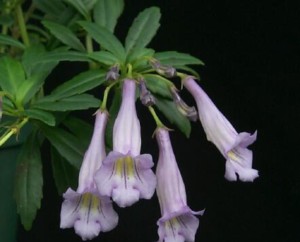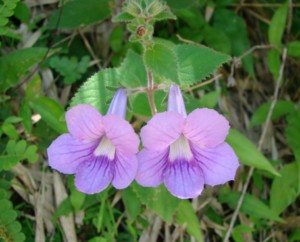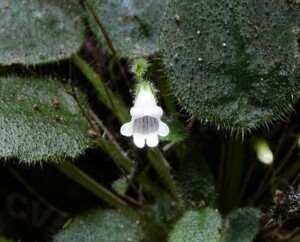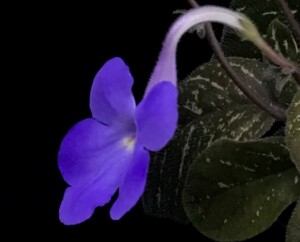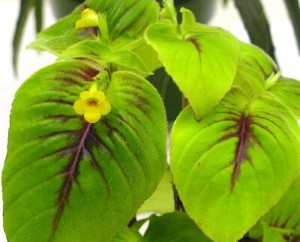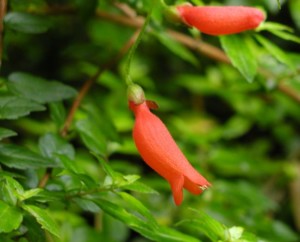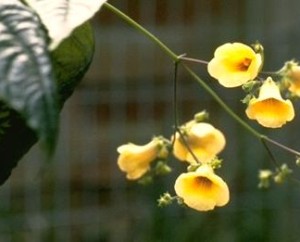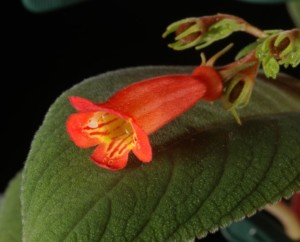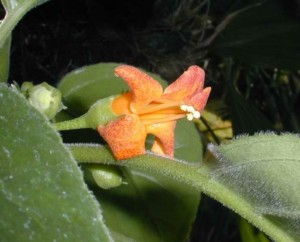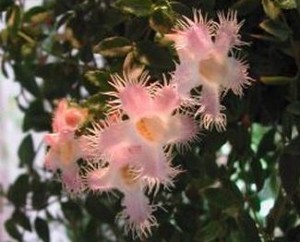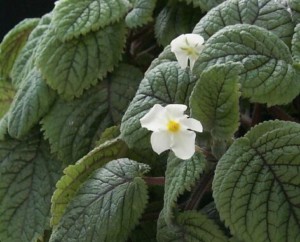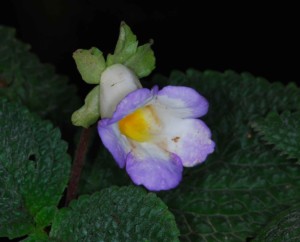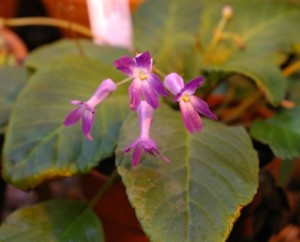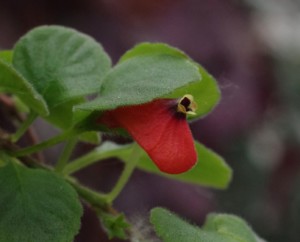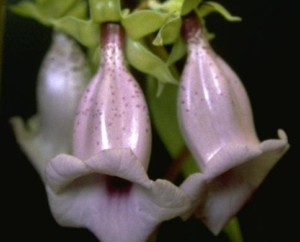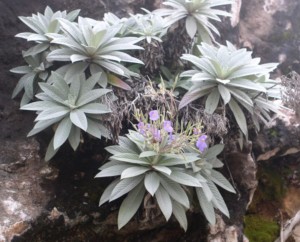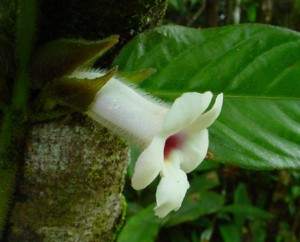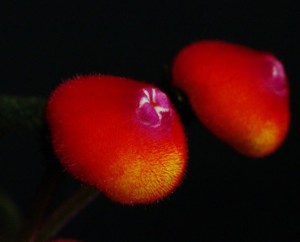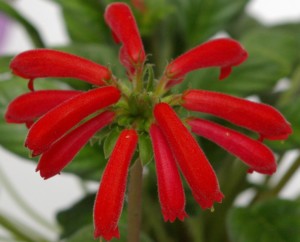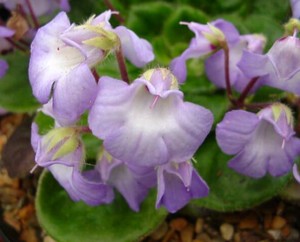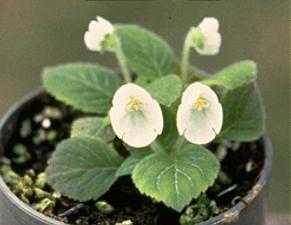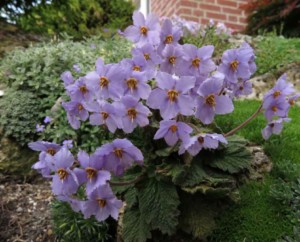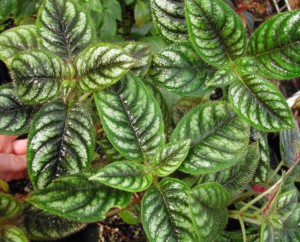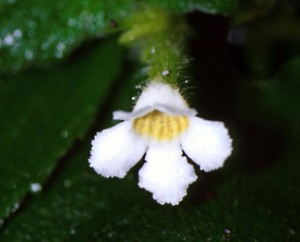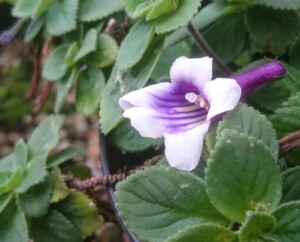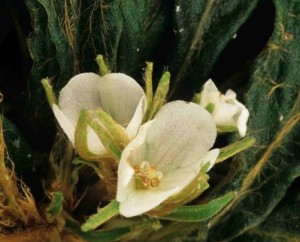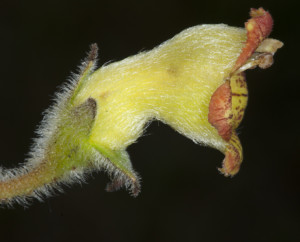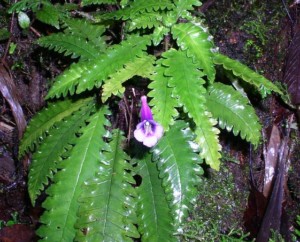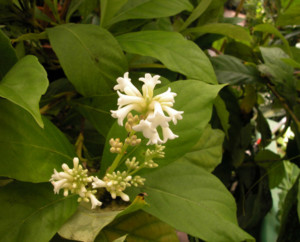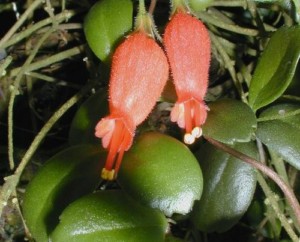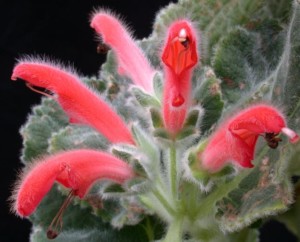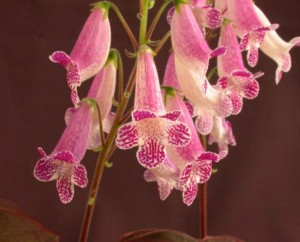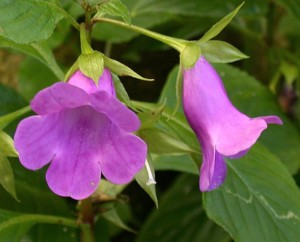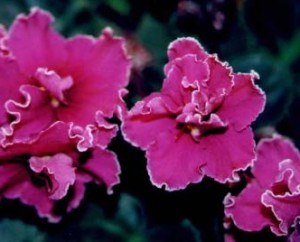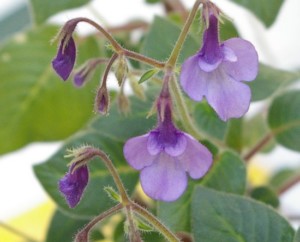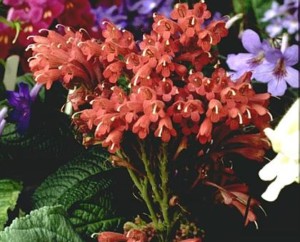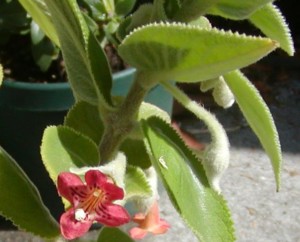Gesneriad Genera
The form of this species most often seen in cultivation is the one above, with dramatically variegated foliage. There is also a plain-leaved form, otherwise very similar.
Additional photos can be seen in a slideshow by clicking one of the links below.
- A spectacular flowering plain-leaved form, exhibited at the 2021 virtual convention of the Gesneriad Society
- Another flowering show plant
- A close view of the flowers on this plant
P. ‘Chastity’ is a hybrid of P. longgangensis and P. flavimaculata, created by John Boggan. It has larger flowers and smaller leaves than either parent, as illustrated in a photo linked below. The feature image above was exhibited at the 2021 virtual show of the Gesneriad Society.
Additional photos can be seen in a slideshow by clicking one of the links below:
- A comparison of the flowers and leaves of P. ‘Chastity’ with its parents
- Another plant
- A show plant, from the 2002 convention of the Gesneriad Society.
Another photo of this species, better illustrating the habit, can be seen here.
R. myconi grows primarily in the Pyrenees, on the border between Spain and France, where these were photographed. A similar species, R. serbica, grows in the mountains of south-eastern Europe.
S. laui is said to have among the best foliage in the genus, with red hairs on the leaves providing an overall red plush effect in strong light (in weak light, the leaves are more plain green). A flower closeup illustrating the darker colors associated with higher light can be seen here.
While the flowers are sometimes characterized as “bluish”, some individuals may be more accurately identified as blue-toned pink. Some plants appear to have bluer flowers, as in this photo, which appears closer to the early descriptions of the species.
Blue/purple shades are sometimes difficult to capture, especially on film in the pre-digital age, and also with modern digital cameras. It’s possible that the image above does not show as much blue as in “real life”.
This photo was originally identified as Achimenes violacea ‘Semi Plena’, but since ‘Semi Plena’ is semi-double, it is clearly not that cultivar. Perhaps a single sport, perhaps another hybrid.
Other views of this species can be seen in a slideshow by clicking one of the links below.
- A photo of a flower from the back, showing the characteristic, and unusual, spur at the base of the flower.
- A front view
- A profile view
Note that the colour varies a bit in the photos, probably the result of different film types and processing, or different digital cameras.
Achimenes heterophylla has a range restricted to a number of states within Mexico. It has variable flowers, shading from more or less pure orange with some yellow in the throat to mostly yellow with orange shading. Additional photos can be seen in a slidshow by clicking one of the links below:
- A larger portion of a flowering plant
- Another close-up flower photo, of the clone above
- A flower with more yellow than orange
Rhytidophyllum species are likely bat pollinated — the yellowish flowers with dark maroon markings are typical of many bat-pollinated flowers. The pattern of the markings on the flowers of R. tomentosum is quite variable.
This species, which grows as a small tree, is the only member of the genus. The taxonomic placement of the genus remains uncertain, although evidence published in 1994 and earlier suggests the Gesneriaceae is a reasonable home.
This Solenophora species grows as a woody shrub, and prefers moist habitat, such as this location adjacent to a small waterfall. Flowers of this species can be seen here.
Titanotrichum oldhamii is an interesting, beautiful and unusual plant, native primarily to Taiwan, Japan and adjacent areas of mainland China. It is the only Gesneriad not native to the Americas which has rhizomatous root structures. Long thought to be sterile, it turns out that it is essentially self-sterile — almost all of the material in cultivation has been a single clone, hence no seed could be produced.
However, additional clones have come into cultivation through a research project conducted in part at the Royal Botanic Gardens in Edinburgh. The plant illustrated here is distinct from the “standard” cultivar. See close-up photos of this plant and of the standard form for comparison purposes.

